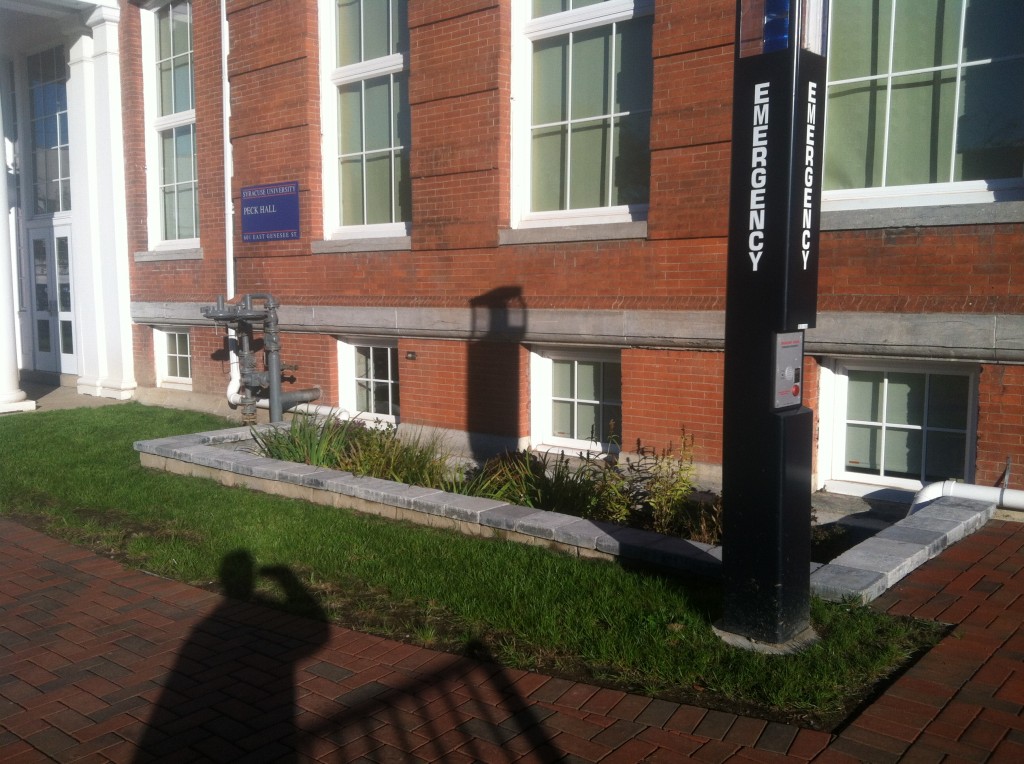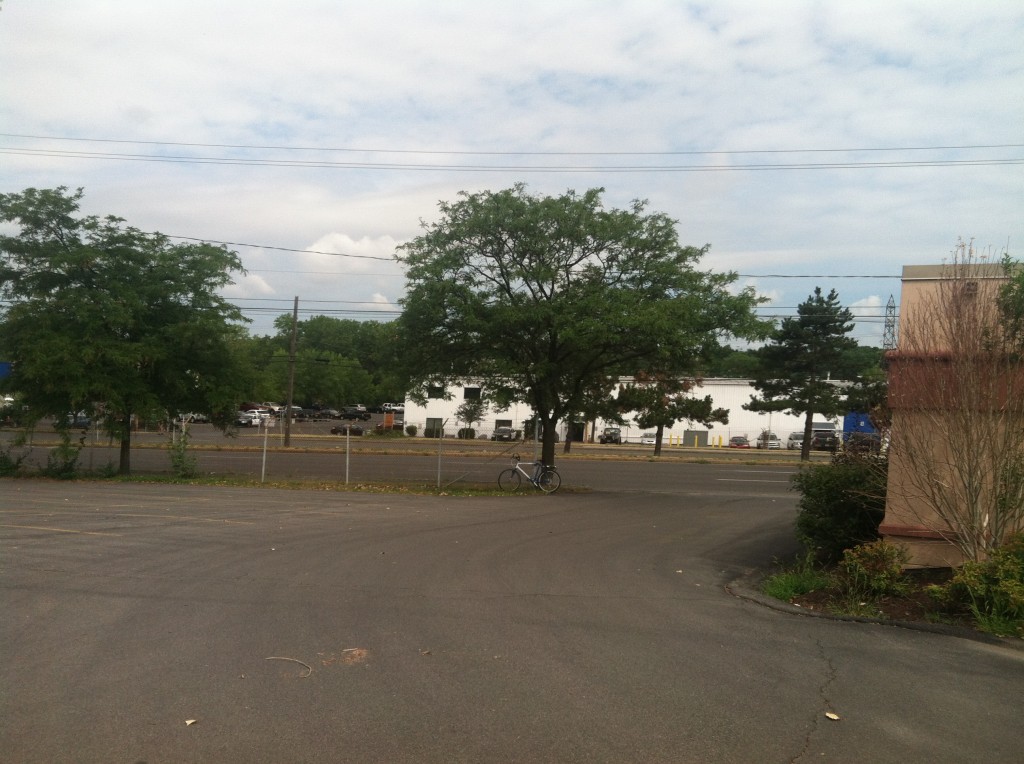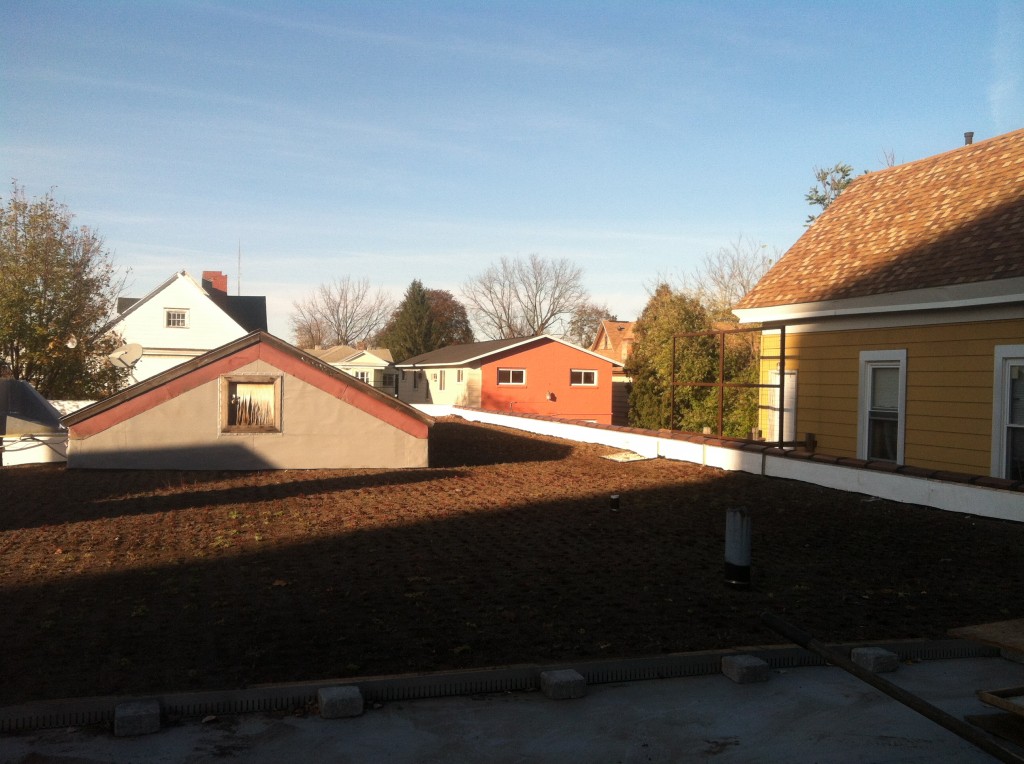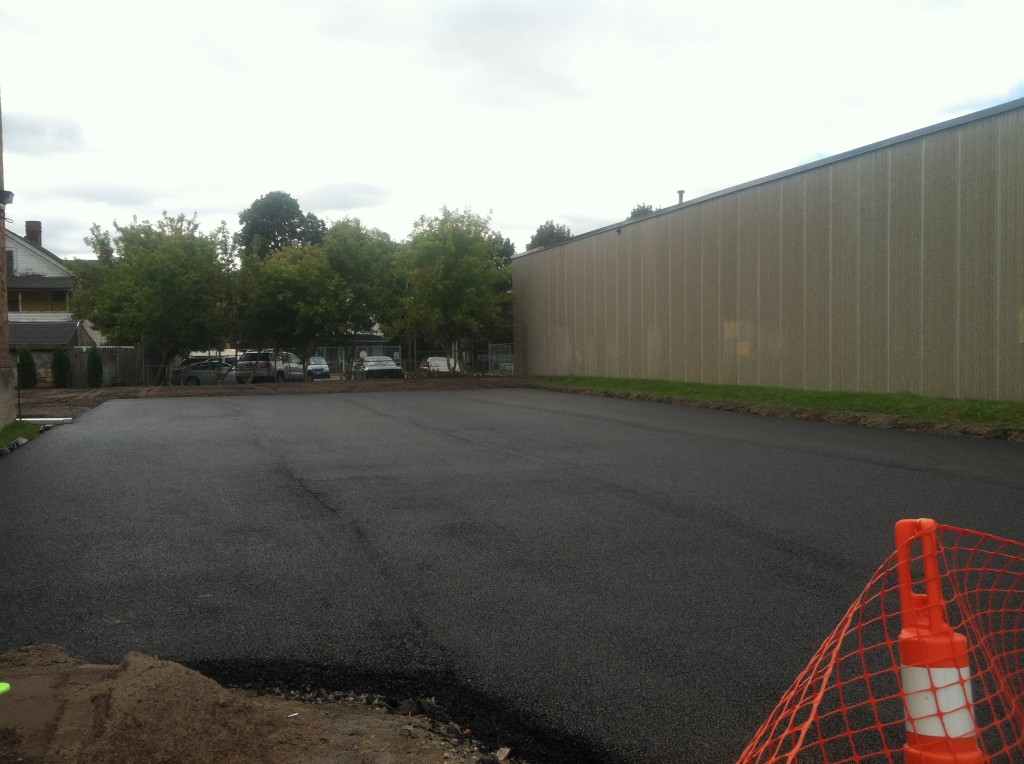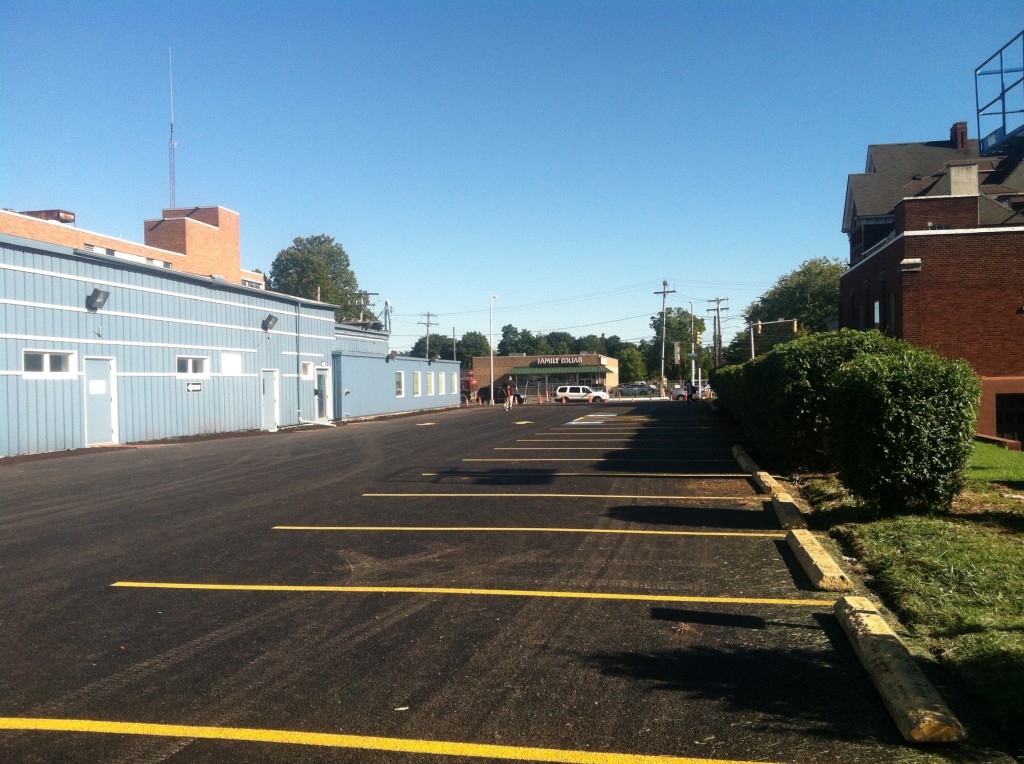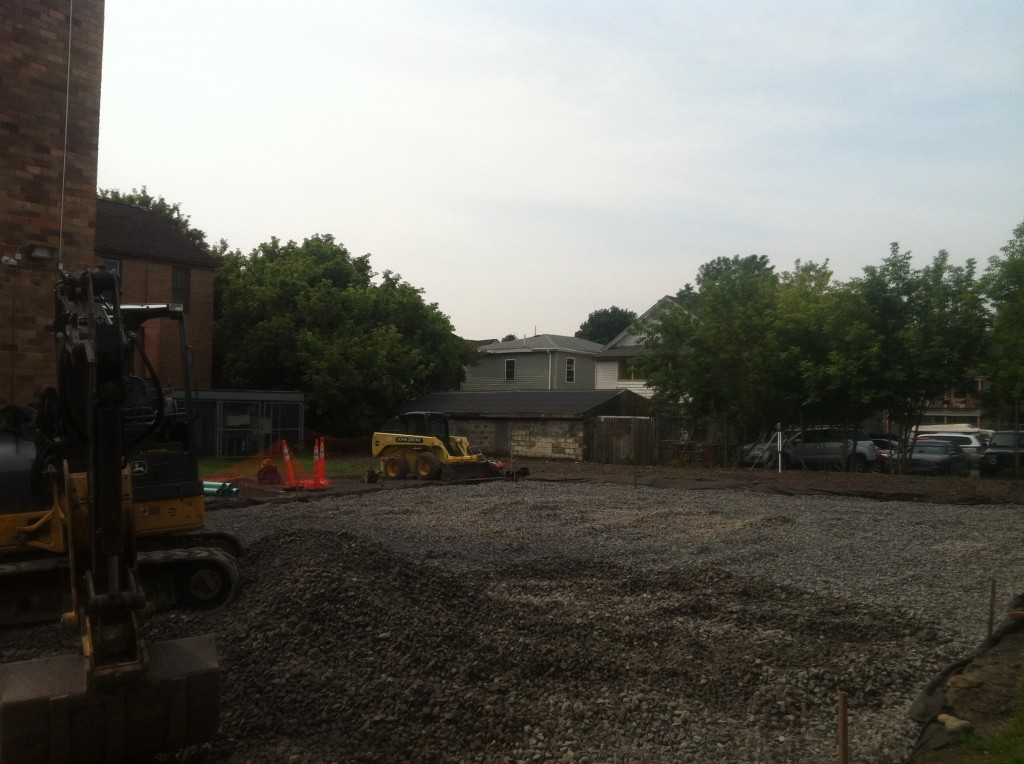Check out NSE’s blog post on Syracuse Urban Properties. We provide a local pictorial perspective on the recent NRDC report “The Green Edge: How Commercial Property Investment in Green Infrastructure Creates Value.”
Tag Archives: Syracuse

Erie Boulevard Green Infrastructure Project Completed!
Construction was completed in late 2013 of the Erie-Bruce Corp. “Save the Rain” green infrastructure project. Natural Systems Engineering designed the bioretention area, rain garden, porous asphalt, and pervious pavers to not only achieve Onondaga County’s Save the Rain objectives with respect to combined sewer overflows (CSOs), but to mitigate drainage issues at the facility, and improve the aesthetics of the site.
Site view pre-construction:
Post-construction:
Green Roof Completed at Graham Millworks
Green Infrastructure (Porous Asphalt) Construction at People’s AME Zion Church Completed!
Lean-on-Me (Onondaga Commons) Porous Asphalt Save the Rain Project Completed!
Porous Asphalt Project Construction Underway at the People’s AME Zion Church
Beartrap Creek Final Report
Beartrap Creek is a secondary tributary contributing to Onondaga Lake located in Onondaga County, New York. With the growth of the city of Syracuse, the urban development and non-point pollution has been degrading Beartrap Creek. In 2011, a project was designed by Izaak Walton League to address one of the long-term goals of the Great Lakes Restoration Initiative- to provide a healthy ecosystem for fish and wildlife.
This project was separated into three subjects:
- Describe the fish community at select locations upstream, downstream, and at sites of restoration in Beartrap Creek before and after habitat enhancements are made, using Rapid Bioassesssment Protocols (RBPs)
- Apply an Index of Biological integrity (IBI) to determine spatial and temporal changes in fish species diversity, density, and size distribution
- Conduct a Visual Habitat Assessment (VHA) of sites before and after construction to determine temporal changes in riparian and in-stream habitat quality
The results of the installation of in-stream structures improved the habitat condition for locations in Beartrap Creek. Based on the IBI, fish community structure was shown to improve at and downstream of habitat enhancements approximately 8-11 months following installation. However for most of those locations improvements were minimal following initial installation, and for all of these sites, IBI scores remained the same or decreased in 2013. Fish richness and diversity was relatively consistent during sample years for each location, with only one location showing a consistent increase in diversity; a site that was upstream of habitat enhancements.
Conclusions were drawn from similar projects that habitat restoration efforts take longer than 2 years to observe the desired outcomes. These sites, as well as others further downstream will be monitored for the next few years with hopes that the restoration efforts have improved the ecosystem.

